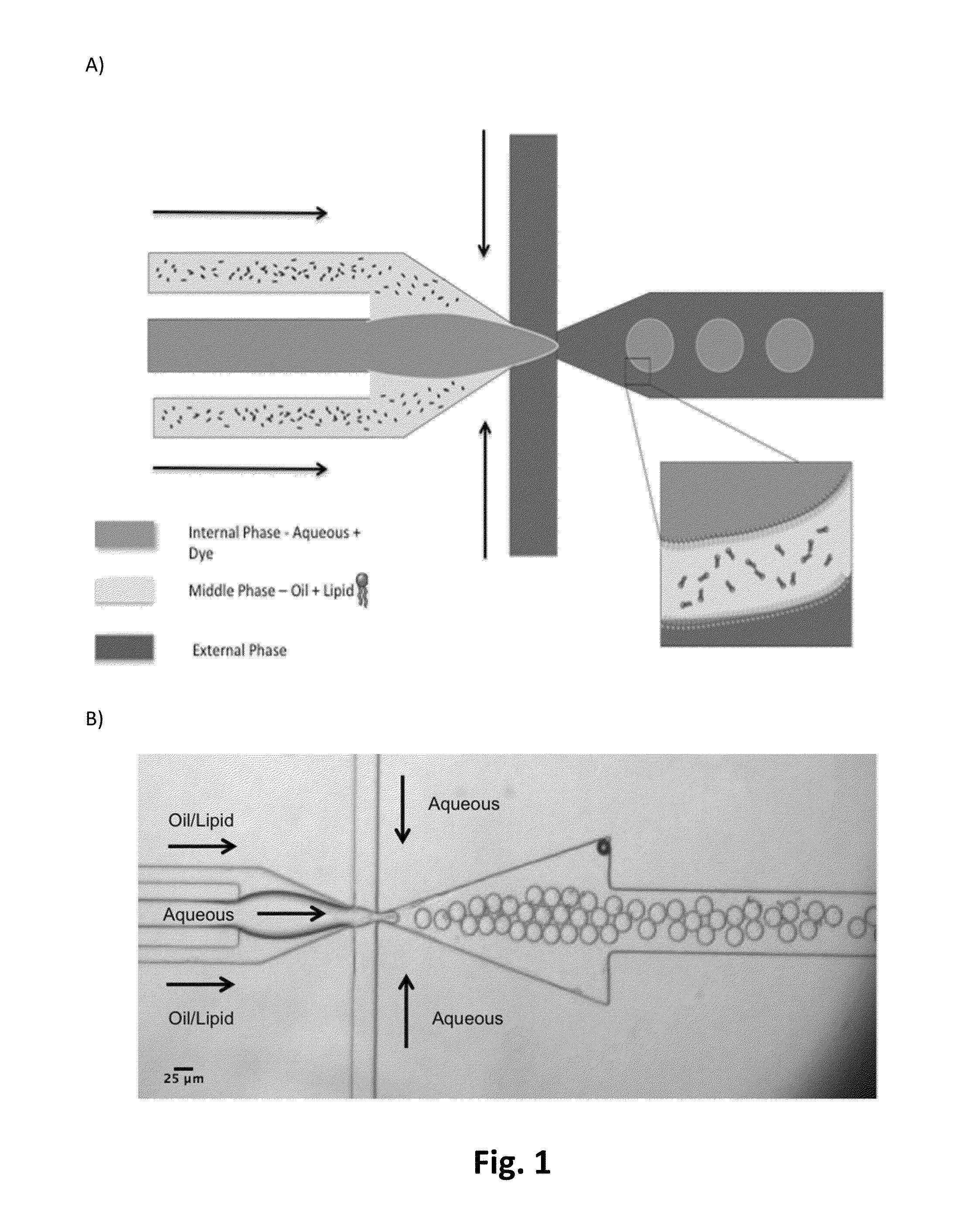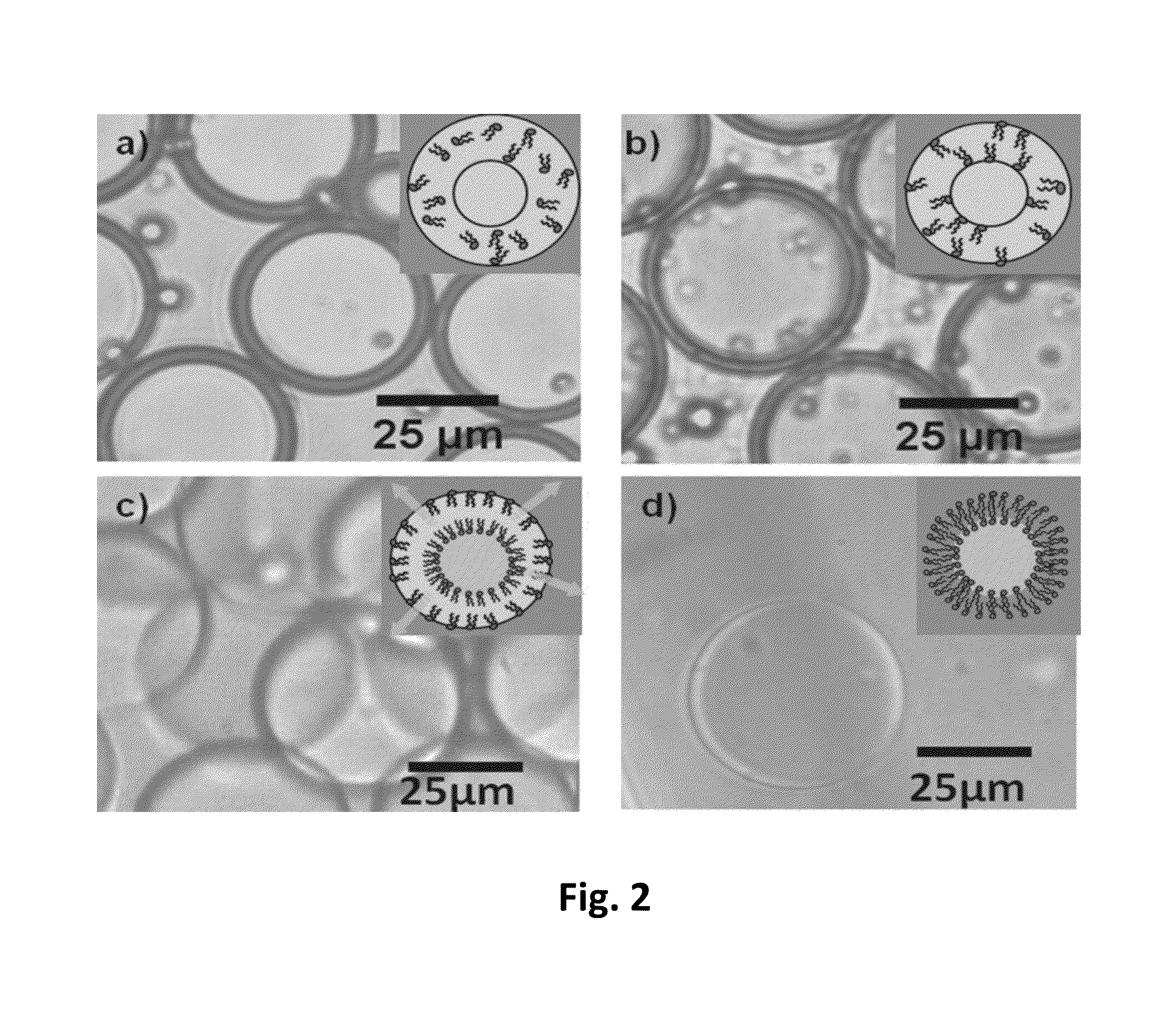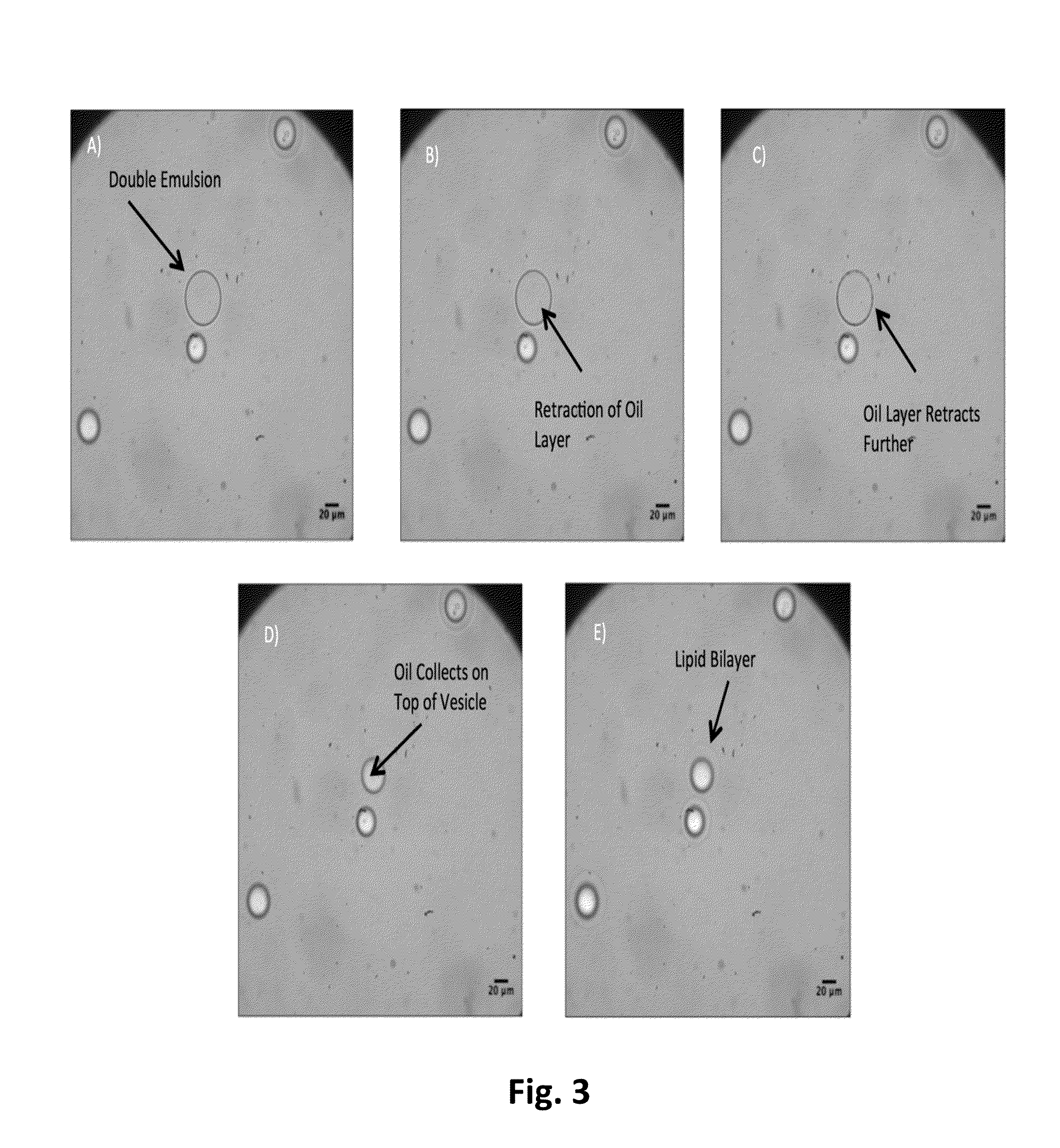On demand vesicle formation from vesicle precursors suitable for long-term storage
a vesicle and precursor technology, applied in the direction of biocide, antibody medical ingredients, peptide/protein ingredients, etc., can solve the problems of low encapsulation efficiency, high polydispersity, multilamellar membranes, etc., and achieve high shear flow force
- Summary
- Abstract
- Description
- Claims
- Application Information
AI Technical Summary
Benefits of technology
Problems solved by technology
Method used
Image
Examples
example 1
Formation of a Water-Oil-Water Double Emulsion and Vesicles
[0081]We begin by forming a thin shell W / O / W double emulsion within a microfluidic device (FIG. 1). The double emulsions consist of an internal aqueous compartment with 5% Pluronic F68 (Sigma-Aldrich) and a 250 mM sucrose solution, surrounded by a thin oil layer with 10 mg / ml 1,2-dioleoyl-sn-glycero-3-phosphocholine (DOPC, Avanti) and 5 mg / ml cholesterol (Research Chemicals Ltd). These double emulsions can be stored for at least a year, without any morphological changes or degradation.
[0082]Upon transfer to an electrolytic solution (typically 1×PBS or 250 mOsM NaCl) without any stabilizing surfactant (Pluronic F68), the double emulsions undergo a morphological transformation whereby they become vesicles. It is common knowledge that ionic solutions tend to have higher surface tension (or interfacial tensions with oils) than does pure water, a phenomenon known as the specific ion, or Hofmeister, effect (E. R. A. Lima et al. 20...
example 2
Formation of Artificial Antigen Presenting Cells
[0084]We begin by forming a thin shell W / O / W double emulsion within a microfluidic device (FIG. 1). The double emulsions consist of an internal aqueous compartment with 5% Pluronic F68 (Sigma-Aldrich) and a 250 mM sucrose solution, surrounded by a thin oil layer with 10 mg / ml 1,2-dioleoyl-sn-glycero-3-phosphocholine (DOPC, Avanti) and 5 mg / ml cholesterol (Research Chemicals Ltd). Also contained within the thin oil layer are peptide-MHC (pMHC) complexes and costimulatory molecules. These double emulsions can be stored for at least a year, without any morphological changes or degradation. Upon transfer to an electrolytic solution (typically 1×PBS or 250 mOsM NaCl) without any stabilizing surfactant (Pluronic F68), the double emulsions undergo a morphological transformation whereby they become vesicles that contain the peptide-MHC (pMHC) complexes and costimulatory molecules within the lipid bilayer.
[0085]While the present description set...
PUM
| Property | Measurement | Unit |
|---|---|---|
| Time | aaaaa | aaaaa |
| Force | aaaaa | aaaaa |
| Polarity | aaaaa | aaaaa |
Abstract
Description
Claims
Application Information
 Login to View More
Login to View More - R&D
- Intellectual Property
- Life Sciences
- Materials
- Tech Scout
- Unparalleled Data Quality
- Higher Quality Content
- 60% Fewer Hallucinations
Browse by: Latest US Patents, China's latest patents, Technical Efficacy Thesaurus, Application Domain, Technology Topic, Popular Technical Reports.
© 2025 PatSnap. All rights reserved.Legal|Privacy policy|Modern Slavery Act Transparency Statement|Sitemap|About US| Contact US: help@patsnap.com



